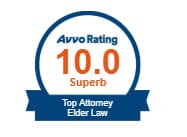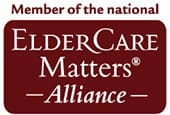
There are approximately 25 million veterans alive today. However, only about 7.2 million veterans are enrolled with the Department of Veterans Affairs ("VA"), and only 5.5 million receive health care services and 3.4 million receive monetary benefits from the VA. Many veterans are unaware of the vast benefits available to them through the VA. Benefits through the VA can be a valuable substitute or addition to any long-term care plan that an elderly veteran should consider. Many have heard of Aid and Attendance as a possible option. However, Aid & Attendance is just a small part of the benefits that the VA can offer. The following article will provide a brief overview of VA benefits, the basic eligibility requirements for the Aid & Attendance program, and compare some of the differences in Medicaid and VA pension eligibility rules.
Overview of VA Benefit Structure
Veterans benefits are provided through the three administrations of the VA. First, the National Cemetery Administration (NCA) provides veterans and eligible family members with burial/cremation and funeral services. The Veterans Health Administration (VHA) is the largest health care system in our country and provides health care services to veterans or family members under certain circumstances. Lastly, the Veterans Benefits Administration (VBA) provides benefits to veterans, their family and survivors including disability compensation, pension, education, home loans, and life insurance. Under the VBA, veterans may be eligible for "Compensation" which is a monthly income given to a veteran as a result of sustaining a servicerelated injury. Veterans without a service-related injury, or the surviving spouses of such veterans who have limited income and assets, may be eligible for "Pension" benefits. Pension benefits start with a basic pension for low income veterans, and for those who are eligible for "Housebound" or "Aid & Attendance", an additional allowance may be granted.
Eligibility for Aid & Attendance
Aid & Attendance is a little known benefit that can provide significant income to frail veterans that require the aid and attendance of another person. The veteran must meet all of the following criteria to be eligible for the Aid & Attendance program:
A. Must be a wartime veteran: The veteran must have served at least 90 days of continuous
active duty service, one day of which must be during the following wartime periods:
- World War I: April 6, 1917, through November 11, 1918
- World War II: December 7, 1941, through December 31, 1946
- Korean War: June 27, 1950, through January 31, 1955
- Vietnam War: August 5, 1964 (February 28, 1961, for veterans who served Vietnam before August 5, 1964), through May 7, 1975
- Persian Gulf War: August 2, 1990, through the present time. A Presidential Proclamation or a law will be required to set the end date for this wartime period.
B. Must have received a discharge that is other than dishonorable
C. Must be 65 years of age or older OR permanently and totally disabled: The applicant (veteran or a surviving spouse) must be:
- 65 years of age or older, OR
- Is "permanently and totally disabled."
D. The veteran must meet any one of the following conditions:
- Aid of another: The applicant requires the aid of another person in order to perform personal functions required in everyday living, such as bathing, feeding, dressing, toileting, adjusting prosthetic devices, or protecting himself/herself from the hazards of his/her daily environment, OR,
- Bedridden: The applicant is bedridden, in that his/her disability or disabilities requires that he/she remain in bed apart from any prescribed course of convalescence or treatment, OR,
- Living in a nursing home: The applicant is a patient in a nursing home due to mental or physical incapacity, OR,
- Blind: The applicant is blind, or so nearly blind as to have corrected visual acuity of 5/200 or less in both eyes, or concentric contraction of the visual field to 5 degrees or less.
E. Must have low income:
- Veteran with no dependents - Maximum income of $20,447 per year ($1,703 per month)
- Veteran with one dependent - Maximum income of $24,239 per year ($2,019 per month)
- Widow(er) with no dependents - Maximum income of $13,138 per year ($1,094 per month)
Reduction of excess income: Most veterans have incomes that exceed the above income limits. A veteran can reduce his/her excess income by "unreimbursed medical expenses." Unreimbursed medical expenses include assisted living expenses, home attendance services, doctor's fees, dentist's fees, prescription glasses, Medicare premium deductions and copayments, prescription medications, health insurance premiums, transportation to physician offices, and therapy. Costs for home care and assisted living facilities are usually high enough to reduce an applicant's income altogether.
F. Must have limited assets:
There is no exact asset level that an applicant can have in order to qualify for Aid & Attendance. The VA looks at the "net worth" of an individual and does an "age analysis" to determine whether the applicant has "sufficient means" to pay for their own care. The rule of thumb figure that is widely used by regional offices is $80,000. However, based on the "net worth" determination, a 90 year old applicant may not be eligible with $80,000 in his name, but a 75 year old applicant may be.
Medicaid v. VA Pension Rules
While Medicaid and VA Pension are both means tested programs, eligibility rules are quite different, and therefore appropriate planning techniques are often different as well. Some of the important differences to note are as follows:
A. Look Back Period
The "look-back period" is an important concept in the Medicaid realm. The look back period is currently 5 years, and only applies to Medicaid nursing home applications. When an applicant makes a gift within the look-back period, the Medicaid agency will impose a period of ineligibility, or "penalty period", during which the applicant will be required to pay privately for care. However, there is no look back period for VA Pension purposes. Therefore, veterans may gift assets prior to a pension application without being penalized. It is important to note that the look-back period does not apply to community Medicaid applications.
B. Individual Retirement Accounts (IRAs)
Under Medicaid rules, IRAs of the applicant and the applicant's spouse are exempt resources as long as the applicant is receiving periodic payments. The periodic payments, however, are deemed to be income and will be budgeted by Medicaid accordingly. For VA pension eligibility, IRAs are not exempted and are countable assets.
C. Primary Residence
For Medicaid purposes, an individual will not be eligible for benefits if the individual's equity interest in his or her primary residence exceeds $786,000. This limitation does not apply if a spouse or minor, blind or disabled child is residing in the home. However, for VA pension benefits, the primary residence is not a countable resource and there is no home equity limitation requirement.
D. Life Estates
96 ADM 8 provides that "a life estate will not be considered an available resource" for Medicaid eligibility purposes. Thus, the retention of a life estate by a Medicaid applicant will not preclude eligibility. However, the VA takes a different position and treats a retained life estate as a countable resource for VA pension eligibility purposes. In addition, the VA counts the value of the entire property and not merely the life estate as an asset. Note that Medicaid can recover the value of the life estate interest held by the applicant and/or his spouse at the time of death. Benefits under the VA are valuable benefits that are often overlooked by veterans and their surviving spouses. Veterans are strongly encouraged to discover the many other benefits they have earned by serving this country. Elder law practitioners should incorporate VA benefits into long term care planning with veterans and/or their surviving spouses.
Ronald Fatoullah, Esq. is the founder and managing attorney of Ronald Fatoullah & Associates, a law firm concentrating in elder law, Medicaid eligibility, estate planning, special needs, trusts, guardianships, veterans benefits & probate. He is the current chair of the Legal Committee of the Long Island Alzheimer's Association. The firm has offices in: Long Island, Queens, Manhattan & Brooklyn. Yan Lian Kuang-Maoga, Esq. is an associate attorney at the law offices of Ronald Fatoullah & Associates. Ronald Fatoullah and Yan Lian Kuang-Maoga are both attorneys accredited by the Department of Veterans Affairs.






No Comments
Leave a comment